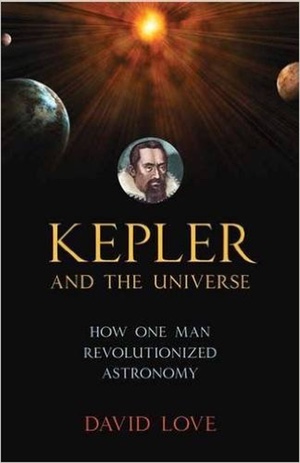Review: Kepler and the Universeby Jeff Foust
|
| “It was a truly beautiful idea and the inspiration behind all his later work. Yet it was utterly and completely wrong.” |
Kepler, an intelligent but sickly child, went to school with plans to become a Lutheran clergyman. But before he could finish his degree, he was assigned to another university as a math teacher, perhaps in part because of his interest in Copernicus and in Calvinism, both of which were frowned upon by Lutheran leaders. This set him on a path of being an itinerant scholar, moving from place to place throughout central Europe for the rest of his career, sometimes looking for funding or opportunities, other times being chased by the region’s religious strife and wars.
Kepler was inspired to pursue the research that would make him famous because, Love recalls, of a mistaken idea. While teaching a class, he saw a pattern of triangles inscribed between the orbits of Jupiter and Saturn. This led him to develop a model of the solar system where five perfect solids were placed between the orbits of the six known planets, which in turn led him to his discoveries of planetary motion—even though that model was terribly wrong.
“This was is big idea. The idea was to be central in guiding him for the rest of his highly productive life and was one he never abandoned,” Love writes. “It was a truly beautiful idea and the inspiration behind all his later work. Yet it was utterly and completely wrong.”
Love follows that later work, including Kepler’s work with Tycho Brahe, who had the detailed observations Kepler needed for his models. The book is a mix of both Kepler’s scientific work and his life story, with enough explanation about the former to help those with little background in astronomy, and enough details about the latter to interest for those already familiar with Kepler’s scientific contributions.
At a little over 200 pages, plus endnotes and references, Kepler and the Universe is a compact and interesting story about Kepler the man, and Kepler the historical scientific figure. The book provides a reminder of the fallacies at the heart of every person, even major historical figures, and how even faulty ideas, like his vision of perfect solids explaining the arrangement of the solar system, can serve as the inspiration for great advances in knowledge.
